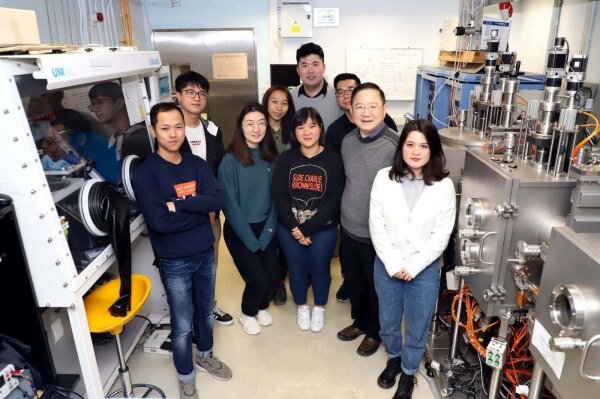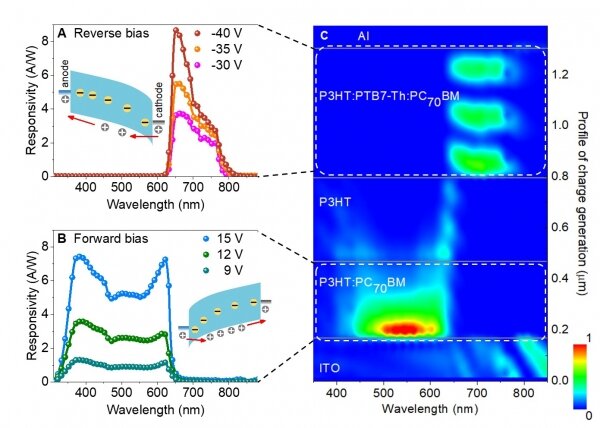Researchers from the Hong Kong Baptist University, Prof. Furong Zhu’s team, have developed a new photodetector (PD) technology - dual-mode organic photodetectors (OPDs), to improve near-infrared (NIR) and visible light detection. This breakthrough in NIR detector technology features the new type dual-mode OPD that can be operated in both reverse, and forward biases for attaining high photoresponses in NIR, and visible light wavelength ranges.
The dual-mode OPDs comprises of a trilayer organic stack of visible light absorber/optical spacer/NIR light absorber. The novel dual-mode OPD gives rise to the remarkable dual-mode light detection phenomena, exhibiting a visible light blind NIR response operated at a reverse bias, and a NIR light blind visible response at a forward bias. The photodetection spectrum can be electrically switched by applying a reverse, or forward bias.
High performing dual-mode OPDs are an attractive alternative optical detection technology to the conventional single-mode OPDs. They offer additional advantages such as having a bias-switchable spectral response for applications in environmental pollution detection, wellness, light communication, and security monitoring in two distinct bands. The solution-processable fabrication processes also lead to significant cost-benefits, thereby creating next-generation large-area and flexible OPDs.
Prof. Furong Zhu’s team is committed to continuously developing and improving on this technology, unlocking more efficient and greater insights, allowing a plethora of industries to refine their processes by increasing productivity, reducing downtime, leading to significant economic benefits and a lower carbon footprint.
To find out more details about this research, please visit: https://advances.sciencemag.org/content/6/5/eaaw8065





